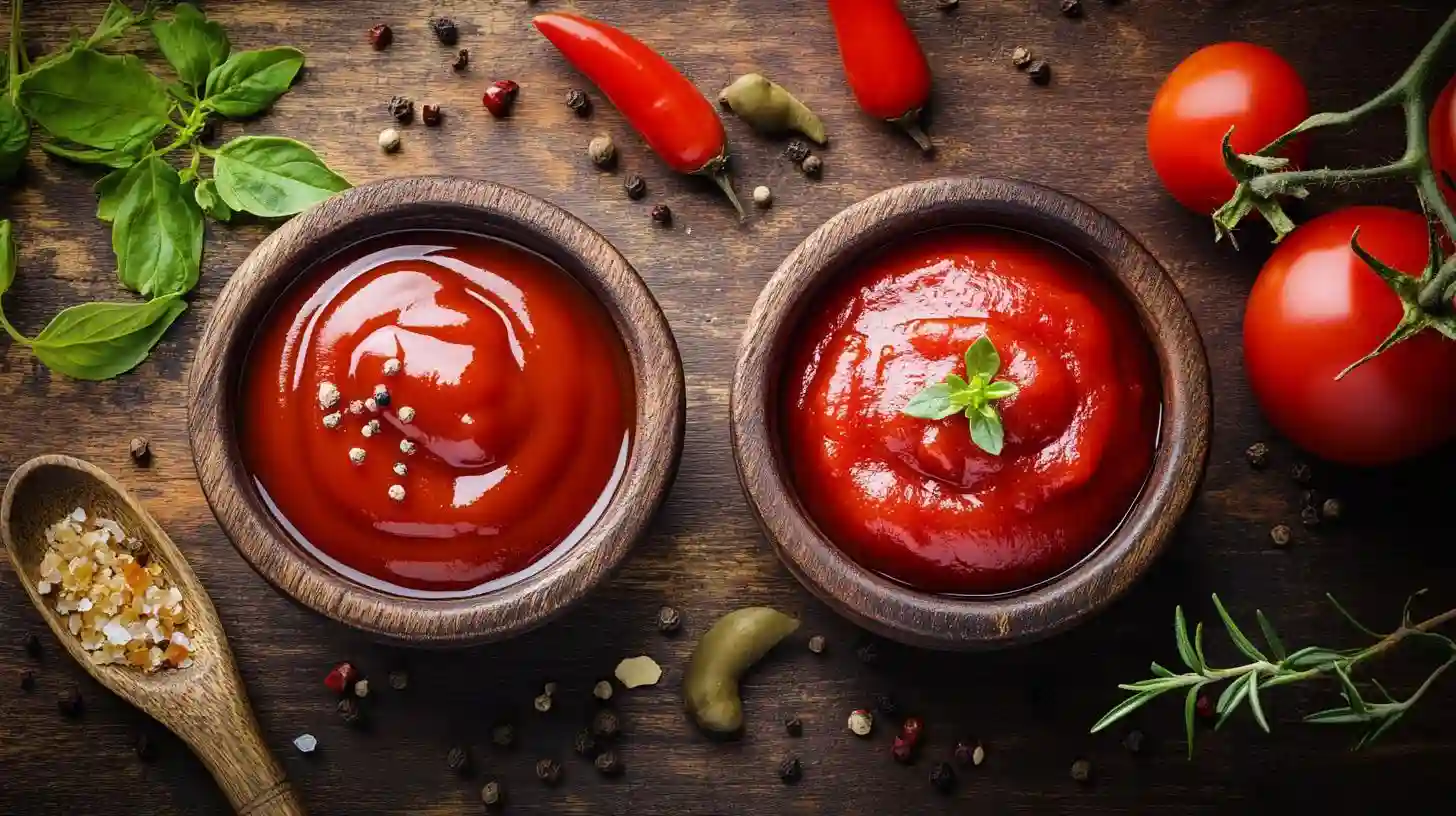
Tomato sauce and ketchup are two ubiquitous condiments that often find a place on dining tables and in cooking practices around the world. While they may appear similar at first glance, a deeper exploration reveals significant differences in ingredients, flavor profiles, culinary uses, and history. Understanding these differences is important for any food lover, chef, or home cook looking to create authentic dishes or simply enjoy their meals more fully.
At the heart of each condiment lies the tomato, yet the way these tomatoes are prepared and seasoned sets tomato sauce and ketchup apart. Tomato sauce is generally made from fresh, crushed tomatoes or tomato puree, often simmered with a variety of herbs and spices to create a rich and complex flavor. Ingredients such as garlic, onions, basil, oregano, and pepper are common additions that help cultivate a savory depth. On the other hand, ketchup is typically made from reconstituted tomato paste, vinegar, sweeteners like high fructose corn syrup or sugar, and a variety of seasonings, resulting in a distinctly different taste. The inclusion of vinegar in ketchup adds tanginess, while the sugars provide a unique sweetness that sets it apart from its sauce counterpart.
Texture also plays a crucial role in differentiating these condiments. Tomato sauce is usually thicker and chunkier, often retaining some of the tomato's original pulp and body, giving it a more rustic appearance. Ketchup tends to be smooth and uniform in texture, which is why it is often used as a dipping sauce or paired with foods like fries and burgers. The consistency of ketchup makes it easy to drizzle, pour, or squirt, enabling it to serve as both a flavor enhancer and a decorative element on plates.
The culinary applications of tomato sauce and ketchup diverge significantly. Tomato sauce serves as a foundational ingredient in many recipes, significantly enhancing pasta dishes, pizzas, casseroles, and various stews. In Italian cuisine, for example, tomato sauce is indispensable for creating authentic marinara or as a base for arrabbiata sauce. It is typically cooked for longer periods, allowing flavors to meld and develop through gentle simmering. Ketchup, in contrast, is primarily used as a condiment to be added at the table or as a flavoring agent in certain dishes, such as meatloaf and barbecue sauces. Its role is less about serving as a standalone sauce and more about complementing or enhancing basic flavors.
When it comes to flavor, the dichotomy between tomato sauce and ketchup is striking. Tomato sauce boasts a rich and savory profile, often having a balance of sweetness from the tomatoes and subtle bitterness from herbs. The complexity of flavors allows it to stand alone or act as a backdrop for more prominent ingredients in a dish. Conversely, ketchup is primarily sweet, with a distinct tanginess imparted by the vinegar. This sweetness and acidity create a taste that many enjoy with fried foods, sandwiches, and as a quick flavor boost for various snacks.
Cultural differences also influence the perception and use of these condiments. In many parts of the world, including various Mediterranean countries, tomato sauce is celebrated for its culinary versatility and intrinsic flavor. Various regional variations exist, each with unique twists and ingredients that reflect local tastes and traditions. Ketchup, while originally born in China as a fermented fish sauce, has gained a stronghold in American cuisine, often considered a quintessential condiment for fast food and casual dining. The simplicity of ketchup’s ingredients and its ready availability have solidified its status in the American palate.
Nutritional content is another area of distinction, with tomato sauce often being seen as the healthier option. Because it is primarily made from tomatoes, tomato sauce tends to be lower in sugar and high in vitamins, particularly vitamin C and lycopene, which is renowned for its antioxidant properties. Ketchup, in contrast, contains added sugars and has a higher carbohydrate count, which can be a concern for those monitoring their sugar intake or following certain dietary guidelines.
The experiences associated with each condiment may also vary. Tomato sauce is often associated with home-cooked meals, slow cooking, and family gatherings where flavors develop and stories are shared over a warm plate of pasta or homemade pizza. Ketchup, on the other hand, signifies quick bites, casual dining, and the convenience of modern fast food, often invoking an entirely different set of memories and social contexts.
As you delve deeper into the world of tomato-based condiments, it’s clear that while tomato sauce and ketchup share a common foundation, their unique characteristics set them apart. Whether used in cooking or as a condiment, understanding the flavor profiles, ingredients, and uses of each can greatly enhance culinary experiences and elevate everyday meals. Embracing the differences between tomato sauce and ketchup opens doors to exploring a variety of tastes and cooking styles, encouraging creativity in the kitchen and allowing for a richer appreciation of these beloved staples.